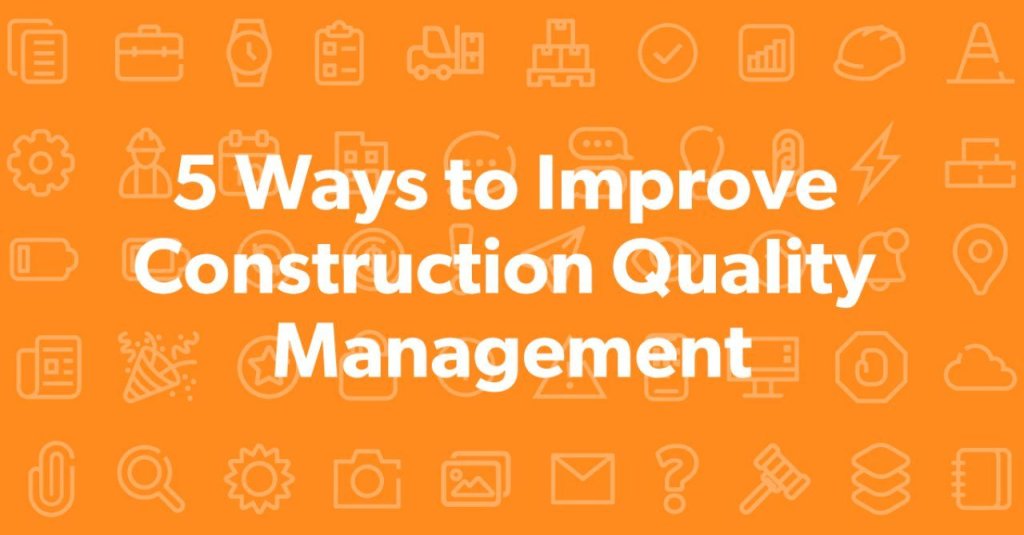If your customers aren’t satisfied with the quality of your work, your project's profitability is in jeopardy. Quality errors often lead to costly rework, disputes, and litigation.
Learn how to improve construction quality management to mitigate risks and keep your clients happy.
What is construction quality management?
Construction quality management is the process contractors use to ensure the work they do meets safety and quality standards. A comprehensive quality management plan for a construction project typically includes both quality assurance (QA) and quality control (QC) strategies.
In an industry like construction, where profit margins can be tight, good quality management is essential. As the American Society for Quality explains, “Implementing a quality management system affects every aspect of an organization's performance.”
Depending on the size of a construction company, they may employ one or more dedicated quality managers. Project managers, superintendents, and other stakeholders often share quality management responsibilities for smaller businesses.
Where quality management often fails
A lack of time and resources is the most common challenge of quality management in construction.
It’s easy to remind your field crew to keep an eye out for quality issues. Without an established process, however, employees may struggle identifying, communicating, and resolving them consistently.
To improve compliance, create a construction quality management plan and give your team the tools they need to successfully implement it.
How to improve construction quality management
Taking the time to create a quality management plan is a significant but worthwhile investment. These 5 tips will help you get started.
1. Use standardized quality control checklists
Quality control checklists standardize QC for your team and help make sure they never miss crucial steps during inspections.
Whether you create your own or use prewritten options, construction quality checklists should become a regular part of your daily reporting process. Determine:
Which tasks need an associated checklist?
Who will complete the checklist?
When does completing the checklist make sense?
Who is responsible for review?
Learn more about how this strategy fits into the construction process with our ultimate guide to construction checklists.
2. Document observations in detail
When you’re using checklists, you’re more likely to catch quality mistakes. But, what do you do when that happens?
Your crew should document any quality observations they make on the construction site in detail. Add a section for employees to add observations to quality checklists to explain why any steps couldn’t be marked as completed. Encourage them to attach photos and videos for greater clarity whenever possible.
When the quality manager or other stakeholder responsible for reviewing the checklist has a detailed observation to reference, they’ll be able to understand the problem and start taking steps to resolve it immediately.
You can also use observations independently of checklists—Provide employees who don’t have checklists assigned with a convenient way to report quality concerns to the appropriate manager at any time.
3. Create a quality management plan
After you’ve determined how checklists and observations will be handled, put your construction quality management plan in writing.
Creating a flow chart, standard operating procedure, or any other type of document that describes the process for using checklists and observations to identify and resolve quality control issues will help you communicate effectively.
Have your stakeholders review the plan and provide feedback. Then, when it is approved, share the plan with your crew and make sure they understand how to access and submit checklists and other resources.
4. Analyze trends
Once you begin using your quality management plan, continue monitoring its effectiveness.
Analyze checklist and observation data to uncover trends and identify common issues. You may need to adjust the plan or add new strategies to address persistent pain points.
Quality management in construction is an ongoing process. Your plan should evolve and grow with your business.
5. Use construction quality management software
One of the easiest ways to improve quality management at your construction company is to invest in quality management software. Instead of adding time-consuming and complicated paper processes to prevent quality issues, you’ll save time with digital documentation.
Mobile checklists and observations can be easily completed in the field, and they can be shared with the office instantly. And, when data is digital, you can use software to automatically organize and analyze it, saving countless work hours.
With software, you also won’t need to worry about defining your own process. A good quality management system will help you create streamlined workflows.
Improve construction quality management with Raken
Our easy-to-use construction quality management software helps busy contractors quickly identify quality concerns and track their resolution.
Create a custom quality checklist or select one from our comprehensive library. Employees can complete checklists using mobile data capture and easily add photo and video attachments.
We're also adding new safety and quality management management features in the coming weeks. Soon, you'll have more control over managing checklists with better assigning and tracking. Your team will be able to more easily create positive and negative observations, and viewing detailed data and reports that show exactly how your quality management plan is performing will be Raken-simple.
Start improving quality management today
See our easy-to-use quality management tools in action.
